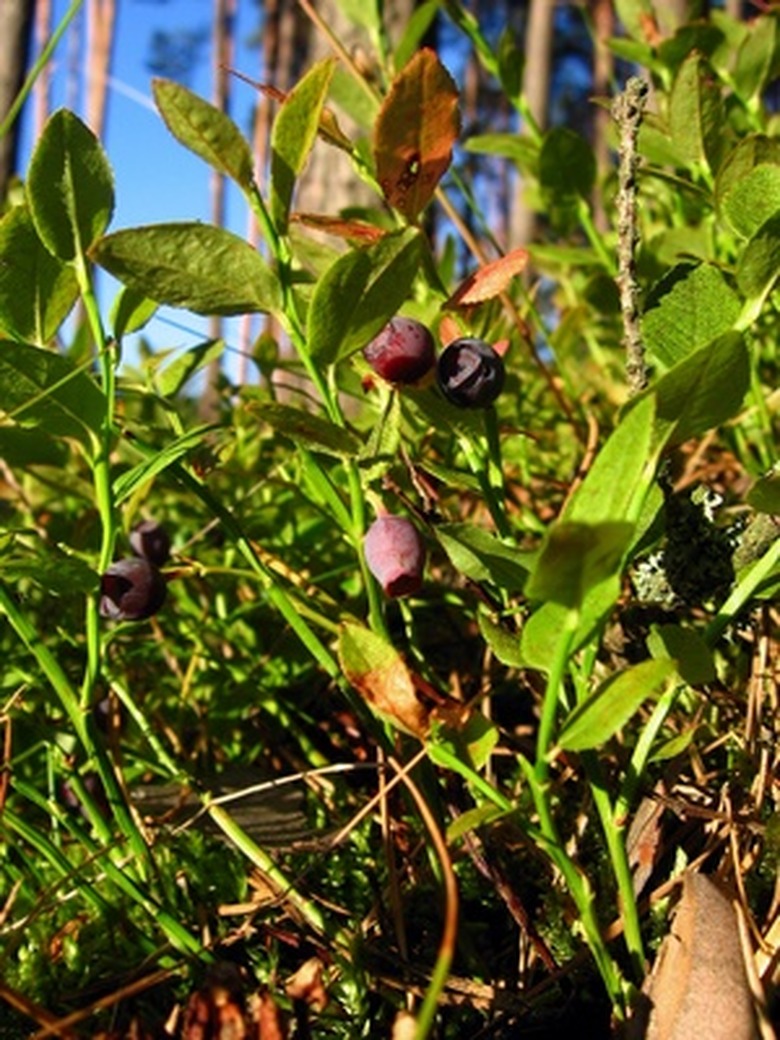How To Winterize Blueberry Bushes
Things Needed
- Straw mulch
- Bark mulch
- Burlap
- Pins
- Sprinkler
- Anvil pruners
Blueberry bushes are cold hardy to different degrees, with highbush, half-high and lowbush berries typically cold hardy to -20 degrees F. Blueberry bushes typically experience winter danger when the plant is not yet dormant or in a spring frost, when the plant has begun to emerge from dormancy. In this situation, sensitive plant tissue can be injured. Winterize blueberry bushes using a range of techniques that vary in intensity and level of protection.
Step 1
Stop fertilizing your blueberry bush in July, advises Garden Center of Colorado. This allows the plant to harden off for the winter and prevents the development of new growth that will be easily damaged in frost. Continue to water the plant regularly, because a well-irrigated bush is in better shape to tolerate winter chills.
Step 2
Mulch the soil with 4 to 5 inches of straw or bark mulch when temperatures drop below 32 degrees F. Leave the mulch in place until the early spring. This protects against damage caused by ground that thaws and freezes throughout the winter.
- Blueberry bushes are cold hardy to different degrees, with highbush, half-high and lowbush berries typically cold hardy to -20 degrees F. Blueberry bushes typically experience winter danger when the plant is not yet dormant or in a spring frost, when the plant has begun to emerge from dormancy.
- Continue to water the plant regularly, because a well-irrigated bush is in better shape to tolerate winter chills.
Step 3
Protect the blueberry bush from cold winter winds and ice damage by wrapping it in burlap. Start at the top of the plant and cover the bush with burlap, pinning the material together. Continue wrapping until the entire bush is covered. Leave the burlap on the blueberry bush until spring.
Step 4
Set up a sprinkler system if you don't want to wrap the blueberry. Turn on the sprinkler when frost is forecast; leave it running until the frost danger passes. The sprinkler will coat the blueberry branches with water that turns to ice; the ice will provide insulation from the freezing air temperatures.
- Protect the blueberry bush from cold winter winds and ice damage by wrapping it in burlap.
Step 5
Wait until your blueberry plant begins growing again, then inspect for frost damage. Damaged growth may be discolored or the branches may be dead at the tip. Prune off discolored or dead growth with anvil pruners to stimulate new, healthy growth.
